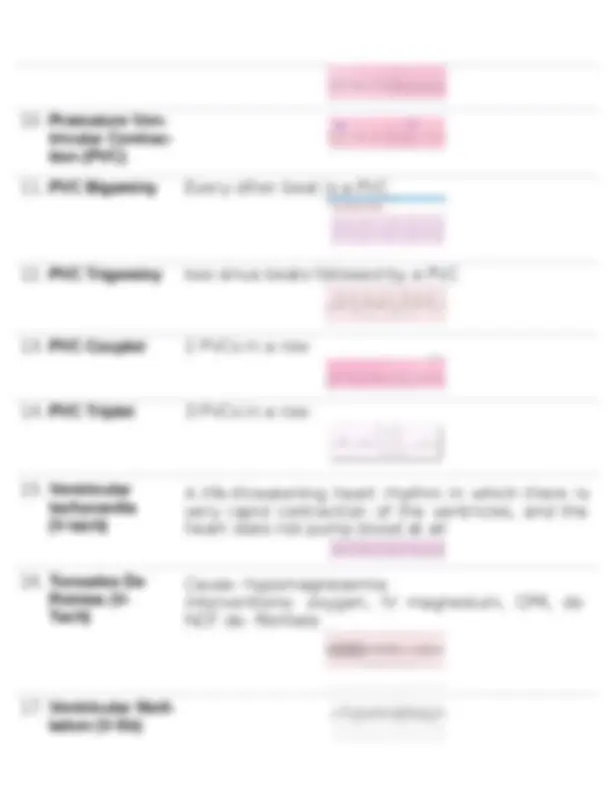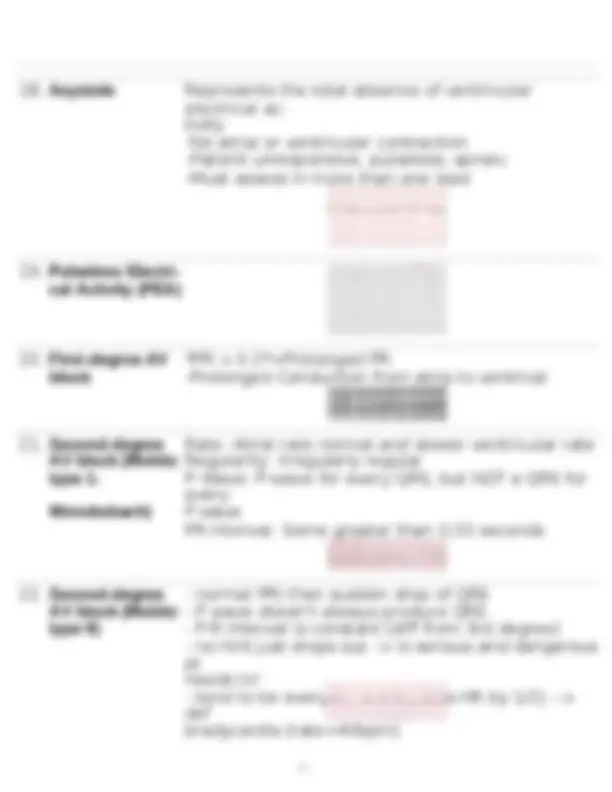





Study with the several resources on Docsity

Earn points by helping other students or get them with a premium plan


Prepare for your exams
Study with the several resources on Docsity

Earn points to download
Earn points by helping other students or get them with a premium plan
Community
Ask the community for help and clear up your study doubts
Discover the best universities in your country according to Docsity users
Free resources
Download our free guides on studying techniques, anxiety management strategies, and thesis advice from Docsity tutors
A comprehensive review of various cardiac dysrhythmias, including their characteristics, diagnostic criteria, and management strategies. It covers a wide range of arrhythmias, from normal sinus rhythm to life-threatening conditions like ventricular fibrillation. Structured as a series of questions and answers, making it an effective study resource for healthcare professionals preparing for exams or seeking to enhance their understanding of cardiac electrophysiology. The detailed explanations and visual representations of the different dysrhythmias make this document a valuable reference for students, clinicians, and healthcare providers involved in the diagnosis and treatment of cardiac rhythm disorders.
Typology: Exams
1 / 6

This page cannot be seen from the preview
Don't miss anything!




Administrator [Date] [Course title]
3 / 7
4 / 7